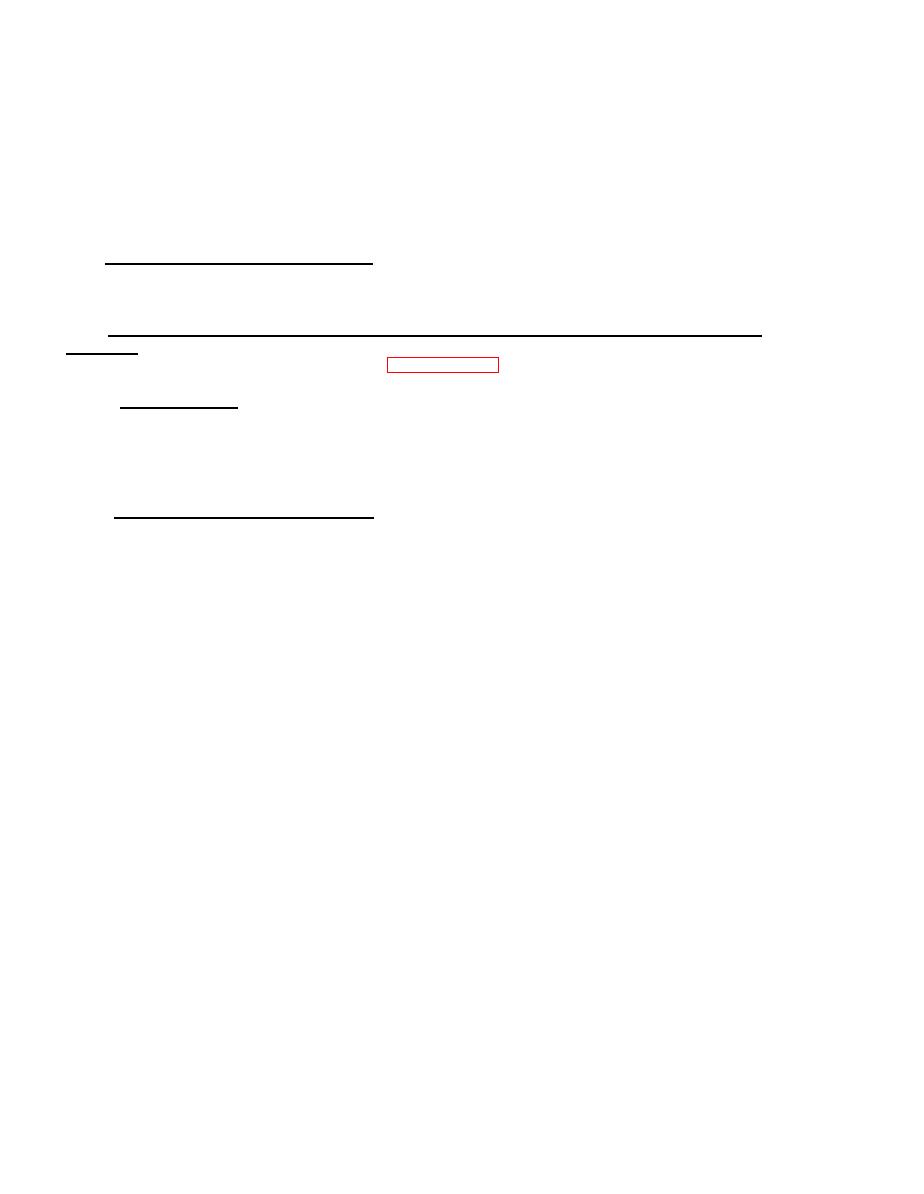
TM 5-6675-323-14
Section IV
ORGANIZATIONAL MAINTENANCE
6 - 1 1 . L U B R I C A T I O N I N S T R U C T I O N S . This equipment requires no lubrication at the
6-12. REPAIR PARTS, SPECIAL TOOLS; TEST, MEASUREMENT, AND DIAGNOSTIC EQUIPMENT
(TMDE) ; AND SUPPORT EQUIPMENT.
6-12.1 Common Tools and Equipment. For authorized common tools and equipment,
r e f e r to the Modified Table of Organization and Equipment (MTOE) applicable to your
unit.
6-12.2 Special Tools; Test, Measurment, and Diagnostic Equipment; and Support
Equipment. Special Tools, TMDE, and Support Equipment is listed in the applicable
repair parts and special tools List and Appendix B of this manual.
6-12.3
Repair Parts.
Repair parts are listed in Repair Parts and Special Tools
List, TM 5-6675-323-24P covering organizational maintenance for this equipment.
6-13.1
Checking
Unpacked
Equipment.
a. Inspect the equipment for damage incurred during shipment. If the equipment
h a s been damaged, report the damage on DD Form 6, Packing Improvement Report.
b. Check the equipment against the packing list to see if the shipment is
complete. Report all discrepancies in accordance with the instructions of DA Pam
738-750.
c.
C h e c k to see whether the equipment has been modified.
no organizational PMCS procedures assigned for this equipment.
a. Organizational troubleshooting procedures cover the most common malfunctions
that may be repaired at the organizational level. Repair or adjustment requiring
specialized equipment is not authorized unless such equipment is available.
Troubleshooting procedures used by the operator should be conducted in addition to
the organizational troubleshooting procedures.
b. This manual cannot list all the possible malfunctions or every possible test/
inspection and corrective action. If a malfunction is not listed or is not
corrected by a listed corrective action, notify your supervisor.
c.
For unidentified malfunctions, use the facing schematic or the foldout located
at the end of this manual for further fault analysis.

